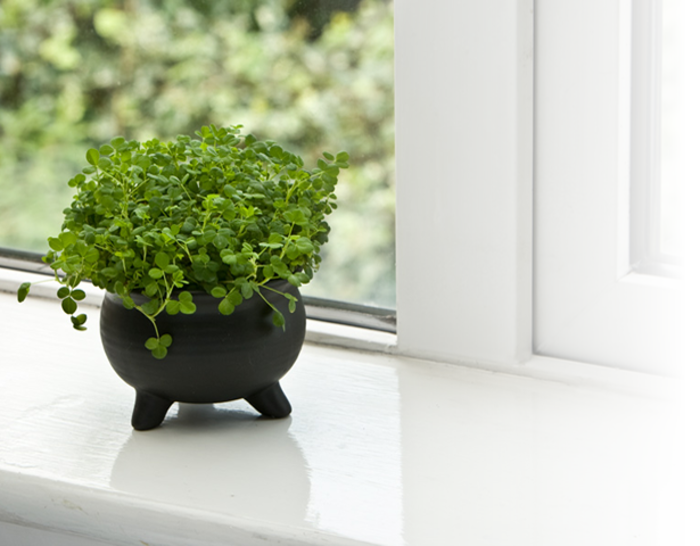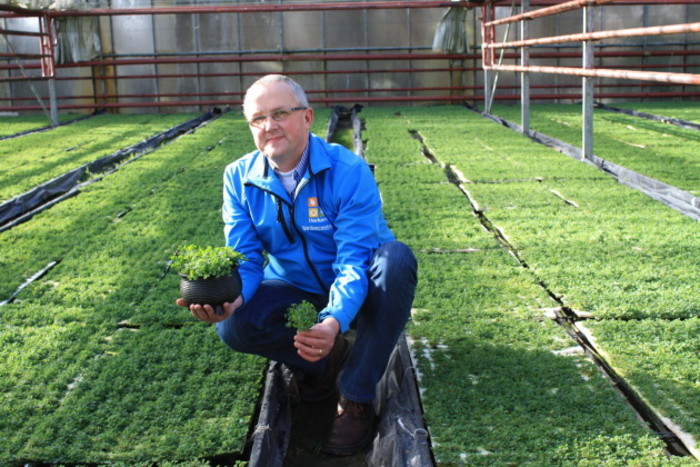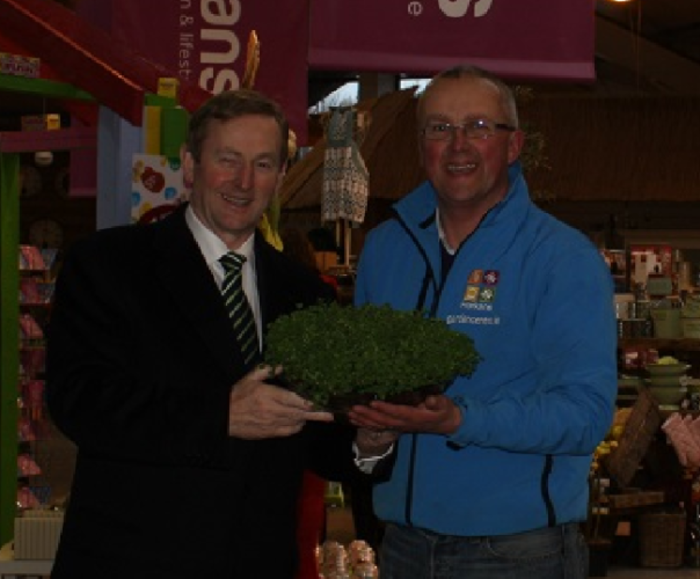The business behind the one-day-a-year shamrock industry
Ireland’s national plant is shipped all over the world for St Patrick’s Day.
WHEN PEOPLE THINK of shamrocks sprouting, the first image to come to mind might be an outcrop in some rain-swept rural landscape.
But the gift handed to the US president today is more likely to have been grown from a hydroponic gel in a greenhouse than any muddy glen.
Some 20 years ago, a group of Irish farmers pooled their resources to create the modern shamrock-growing industry after attending a Teagasc workshop about how to grow the iconic clover sprigs.
Since then, Irish Plant International, which trades as Living Shamrock, has been spun into a successful business. It regularly supplies the shamrock Irish politicians gift to foreign dignitaries such as the US commander-in-chief.
The business was given its first kick-start from Údarás na Gaeltachta, which provided the financial incentives for the company to be developed in Ballinaskellig, a gaeltacht region in Co Kerry.
James O’Leary, managing director of Irish Plant International, says the retail market for the crop is now worth up to €600,000 each year and his company produces over 130,000 shamrock products annually.
“It all started from the workshop. There was a group of us attending it and then afterwards technology became available for the growing of shamrock in a hydro gel,” he says.
“So a few of us got together and formed a company to license the technology that came from University College Dublin – and the rest is history.”
 A skillet filled with shamrocks
A skillet filled with shamrocks
The use of the hydroponic technology to grow shamrock crops has been the backbone of the business.
This means that the plant has a longer shelf life than if it was grown in soil as the roots are left intact, while the production method also makes it easier to get certification for products shipped abroad.
Orders
Every year the company grows around half an acre of shamrocks in a greenhouse, according to O’Leary, with the crop is sown in the September before demand peaks in the build-up to St Patrick’s Day.
It has been a good year for orders, he says, with the company seeing around a 15% increase in demand.
Roughly four-fifths of the shamrocks grown in Ireland stay in the country, while the remainder is exported to various hotspots for the Irish diaspora.
One of the companies that specialises in exporting the product is Horkans Garden Centre in Co Wicklow, which every year ships “a little piece of Ireland” to far-flung places like Texas, Chile and Argentina.
A single Irish shamrock plant costs around €10 in Ireland and €12 in the US, while a skillet of shamrocks could cost up to €45.
 Paraic Horkan
Paraic Horkan
The garden centre’s co-owner, Paraic Horkan, says his family has been growing shamrocks for decades, with his grandmother Sarah Horkan starting the tradition in the 1940s.
However, his business now sources the crop from Living Shamrock. He has a number of customers, such as the societies that run St Patrick’s Day parades globally, who have been ordering in bulk for years.
“We have a process shamrocks go through because we need to make sure they will survive the journey. So the plant is kept in a special solution with feed before it’s sent,” Horkan says.
“Then we have special packaging for each delivery and then it’s wrapped and placed in padded bags. Because it’s a living plant, we also send a care instruction leaflet to people so they know to keep it refrigerated or in water so it lasts until 17 March.”
It’s a tough journey for a live crop, according to Horkan, who said his company had to stop sending products to places like Australia and New Zealand because “it’s just a bit too far away”.
Other uses
Since shamrocks used in lapels are still living plants, Horkan says they can be easily potted and left to grow so every customer will have an ample supply for another St Patrick’s Day.
Horkan added that, beyond the national holiday, his company also gets the odd order from Irish abroad who want to don a shamrock lapel for special occasions like weddings.
 Enda Kenny and Paraic Horkan
Enda Kenny and Paraic Horkan
Recently, Irish Plant International has found a fresh revenue stream by providing shamrocks as an ingredient for a line of crisps with a patriotic bent.
“Keogh’s Crisps get a bulk order off us every year around now because they have a shamrock and sour cream-flavoured crisp. They would extract the flavouring from a shamrock and use it to add a bit of ‘Irishness’,” O’Leary adds.
“Now, there wouldn’t be many shamrocks in a bag, to be honest, because otherwise the crisps would be quite expensive.”
Nevertheless, over 99% of the business still revolves around St Patrick’s Day – something O’Leary would like to see change.
“I think we should be wearing the shamrock in the week leading up to St Patrick’s Day – the same way they wear the poppy in England. It shouldn’t be something we do just for the day.”





